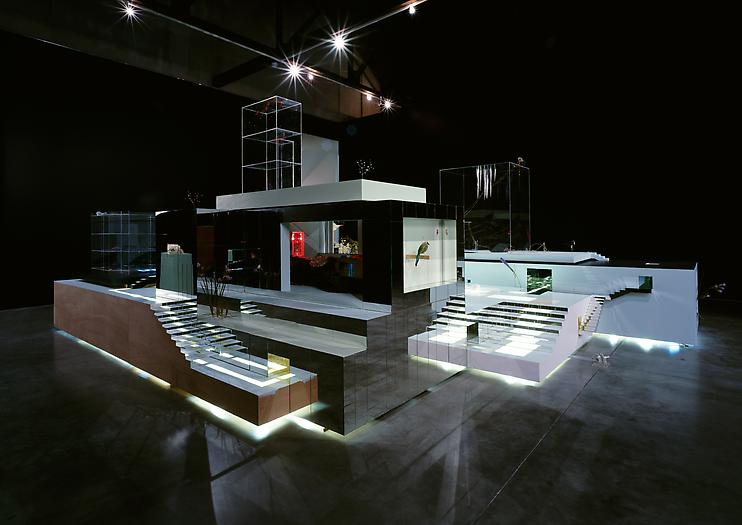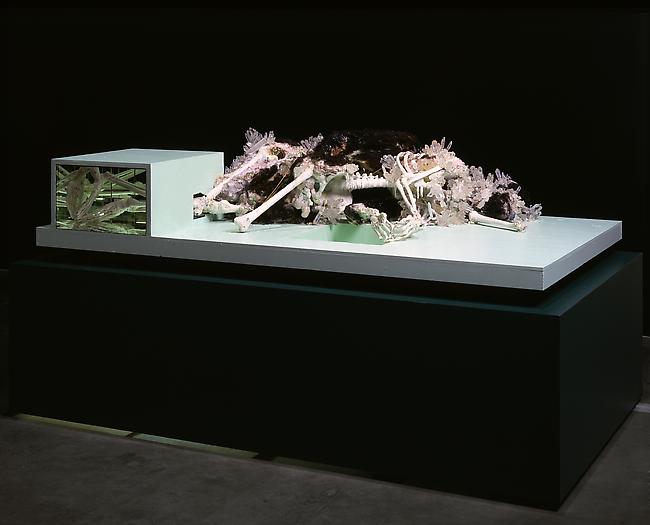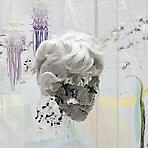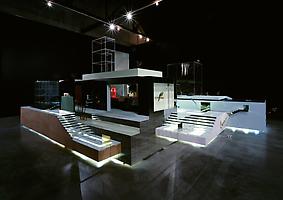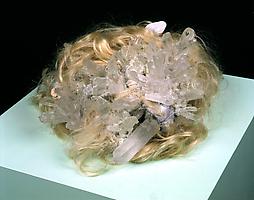David Altmejd
October 22 – November 27, 2004
Main Gallery
"Full fathom five thy father lies; Of his bones are coral made;
Those are pearls that were his eyes:
Nothing of him that doth fade
But doth suffer a sea-change
Into something rich and strange.
Sea-nymphs hourly ring his knell." -William Shakespeare
"It is intended to be alive. Maybe weird and dark, but certainly alive." -David Altmejd
Andrea Rosen gallery is proud to present David Altmejd's first solo exhibition with the gallery featuring three arresting new works.
Altmejd's work drips with decay. The flesh falls away from decomposing werewolves, exposing fragments of bone; their faces either in repose or contorted into a last silent anguished cry.
His sculptures though are less about death than the transition into something else, a transformation perhaps symbolized by the use of the werewolf as a recurrent motif, a creature that in myth painfully changes from man to animal. Entropy is not a corrosive force. Rather, Altmejd employs it as his muse.
The University, his largest and most ambitious sculpture to date uses the artist's distinctive vocabulary. In the piece, a labyrinth of multi-layered platforms and geometric shapes appears to have taken back the corpses like inorganic overgrowth. Mirrored tunnels, staircases and channels of light criss-crossing the work act as nervous systems connecting the whole and creating an energy that permeates the fantastical landscape. The creatures decay not into an organic mulch but calcify into crystals and jewels. Chains connect bones and other parts of the sculpture, a physical manifestation of the electricity that pulses through the work. Mirrored boxes refract the objects inside into infinity.
A Victorian gothic sensibility is tempered by contemporary pop culture. The work is festooned with gaudy jewels, glitter and plastic flowers, like the collection of some insane magpie. The grotesque and glamorous, romantic and geometric, organic and man-made are merged. The werewolves' heads are at once frightening and seductive. Birds and the flowers, both constants in the artist's work, overlay the tension in the piece with a strange sense of serenity.
A second piece shows two decaying creatures in a violent last grasp of lust, an eroticism that charges the work. A monster forces a bony finger into the behind of a werewolf. Again flesh rots but the effect is far from gory. Altmejd instead seems struck by a sense of wonder at the exposed workings of the body, the elegance of the spine and the hands, like illustrations in Gray's Anatomy.
Both works hint at a cryptic narrative. They are alive with creepy horror, similar to fairy tales before the sinister parts of the story were sanitized for modern ears. But they resist any one interpretation. It is the unresolved nature of the story and the symbolic potential of the works that invites fascination.
The third piece is the most abstract but hints at similar themes. A massive symmetrical and intricate network of mirrors, sucks in the world around it, fragments it, digests it, and reshapes it into something new. The sculpture is chiefly about the energy it creates and the concept of transformation. The piece interprets its surroundings, sorting them into its own logic and misshapen order, in much the same way that a viewer experiences the world.
Born in Montreal, Altmejd lives and works in Brooklyn, New York and graduated from Columbia University in 2001. His work was featured in this year's Whitney Biennial of American Art and in the Istanbul Biennial in Turkey.

